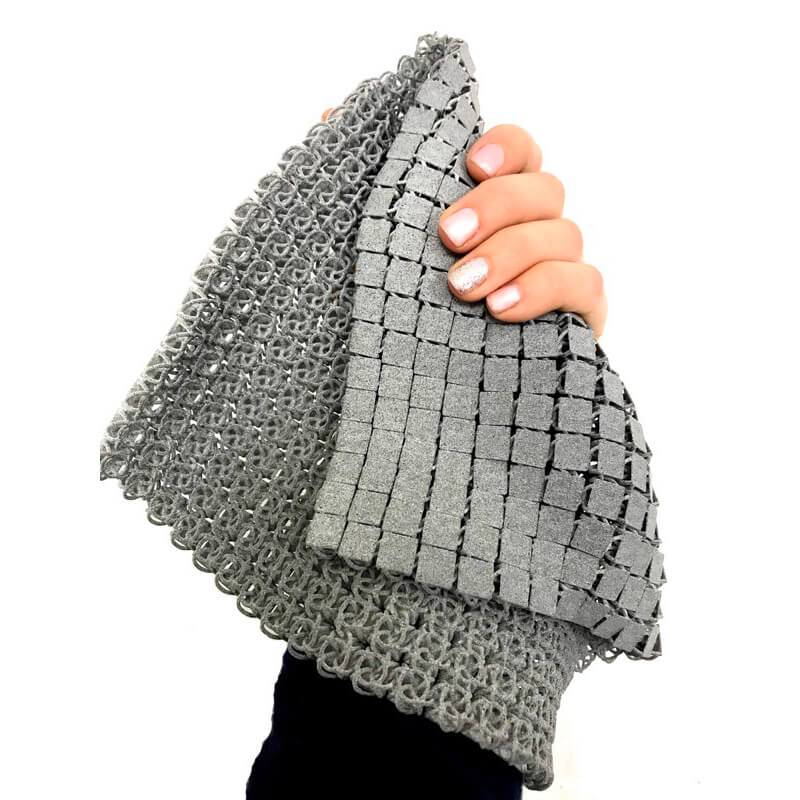The Top Materials for 3D Printing
As additive manufacturing continues to increase in popularity, the materials used in 3D printing are increasingly diverse and specialized. At Jawstec, we understand the importance of using the proper materials for each project, and we are constantly exploring new materials and methods to help our customers create the highest-quality 3D-printed parts possible.

Choosing the Right Material
Choosing the right material for a 3D printing project depends on several factors, including the strength and durability needs of the part, the printing method used, and the desired aesthetic qualities. Some of the best materials for 3D printing include:
- Nylon 11 and 12 – To start the list of the best materials for 3D printing, there is no better way than the materials that are being printed by the top industrial printers in the industry. A strong and flexible material that is ideal for parts that require high strength and durability. It is usually printed in powder bed fusion printers like HP MJF or SLS printers. Nylon 11 is made from soybeans so it is considered a green plastic composite polycarbonate. This material is unique to the point that it does not require support material and it is lightweight with good impact resistance and hardness. This is one of the most common material that is taking the place of small FDM printers.
- PLA – A popular and biodegradable material that is easy to print with and produces high-quality parts with a smooth surface finish. The PLA filament is a thermoplastic that does well with warping adhesion to the print bed. It is made from renewable resources, so it is one of the greenest materials to print with. Vapor smoothing can be done with polylactic acid and polyvinyl alcohol. This material is printed with an FDM nozzle printer using filament. The printing filament style is very popular with prototyping and hobbyists.
- ABS – A strong and durable material that is commonly used for functional parts and prototypes. The academic name is acrylonitrile butadiene styrene. It can be vapor smoothed to make a stronger smoother part. It is one of the most used materials to print with on FDM 3D printers. It can be difficult to print with and requires a heated bed and an enclosed printer.
- PP Polypropylene – PP sees use in many different applications due to its superb chemical and fatigue resistance. PP, like ABS, warps very easily. PP also does not attach well to the build plate. As such, it is a challenging material to 3D print unless it is printed in a powder bed fusion like HP MJF printing. PP is a useful option for food containers and parts that need to be resistant to chemicals, it can be turned into living hinges thanks to its fatigue resistance. This material has great moisture repellent and chemical resistance.
- PETG – A strong and durable material that is easy to print on an FDM printer and generates high-quality parts. It is also reusable and generates no toxic fumes during printing. It has decent tensile strength and rigidity.
- TPU – A flexible and rubber-like material that is ideal for parts that require high elasticity and shock absorption. It can be difficult to print on an FDM printer but with SLS or MJF it is very printable and has great qualities of elasticity. It is very strong when it is Vapor Smoothed. This material is great for medical devices and is highly impact resistant.
- Metal – Usually printed with DMLS or SLM 3D printing process it is a very specialized and expensive process that requires a high-end printer and specialized software. However, it can produce parts with excellent strength, temperature resistance, and durability, as well as unique textures and finishes. It is used extensively in the aircraft industry. It can print titanium, stainless steel, and aluminum. The metal powder is great for creating tooling and casting equipment and has a very high melting point.
- Resin – SLA resign printing is a popular option for creating parts that need high detail. They are good for prototyping and development but have a low impact-resistant rating and come in a liquid form compared to a filament or powder form. You can get some materials that are resistant to high temperatures and have good stiffness but the post-processing usually outways the good with resin printing.

Advanced Materials and Techniques
In addition to the best materials for 3D printing listed above, there are several advanced materials and techniques that can be used to create even more specialized parts. Some examples include SLS Metal printing, Carbon Fiber reinforcement, and Metal Injection Molding. These would not be considered types of materials for 3D printing in some aspects but we love to discuss all the other options that are out there.
At Jawstec, we are always exploring new materials and techniques to help our clients push the boundaries of what is possible with 3D printing. Additive manufacturing materials are constantly advancing and becoming more specialized, at Jawstec, we are committed to staying on the cutting edge of this exciting technology. Whether you need a useful prototype, a highly detailed art piece, or anything in between, we can help you select the right material and technique for your project. Contact us today to learn more about how we can help you achieve your 3D printing goals.



As someone who has already experimented with 3D printing, I found this post to be really helpful. While there are many various materials to pick from, it is critical to select the proper one for your project in order to achieve the greatest results.
Overall, I’m excited to experiment with some of these materials in future 3D printing projects, and I’m curious to see how these materials will evolve and improve in the coming years. Thank you for this fantastic post!